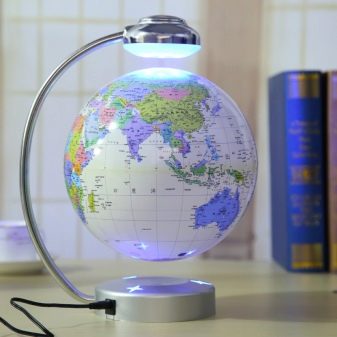Levitating globe: description and principle of operation

An excellent gift for both an adult and a child is a levitating globe with illumination. The principle of its operation is based on a simple law of physics, but the device cannot but amaze: the Levitron differs from an ordinary globe in that it is literally suspended in the air. On sale you can find models not only of the Earth, but also of other planets - they are suitable for lovers of astronomy and unusual interior solutions.


Description
The flying globe is a noticeable decoration for a room, study and any other room. Levitrons work on electromagnetic attraction, "hovering" over a plastic or wooden stand or in an oval frame on a table. The diameter of the entire structure does not exceed 20 centimeters, and the diameter of the globe is 10 centimeters, which makes it compact. However, there are also large spheres, whose diameter reaches 20 centimeters.
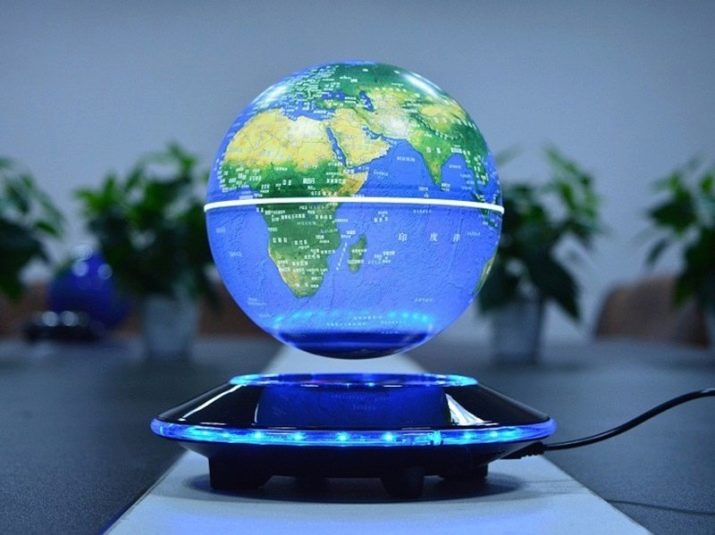
The levitating globe serves not only as a table decoration, but also as a magnetic lamp rotating on its axis. It can be put in the nursery as a night light. The map on the globe can be either real or not perform any function other than decoration.

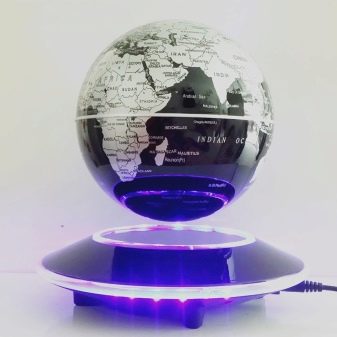
If you need to choose a model that is also suitable as an ordinary geographic globe, then you should take a closer look at the larger and more expensive spheres.
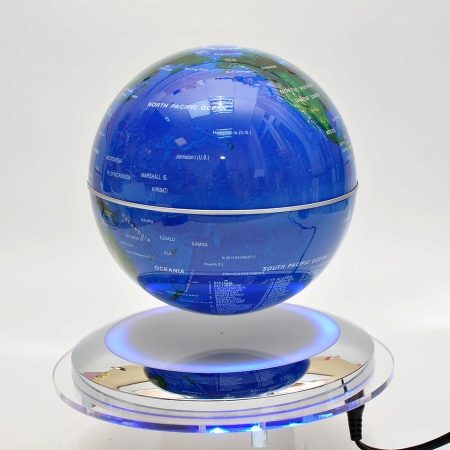
How does it work?
The globe needs a stand for a reason: a magnet and a sensor are hidden inside, magnetizing the structure when it is connected to the network... An oppositely charged magnet is placed in the globe. When they are combined, a repulsive force arises, which keeps the sphere in one position at a height of 1-2 centimeters from the stand.Since an electromagnetic field should appear around the flying object, keeping it in the air, the Levitron needs to be connected to the power supply. For this, an adapter is included with each device.
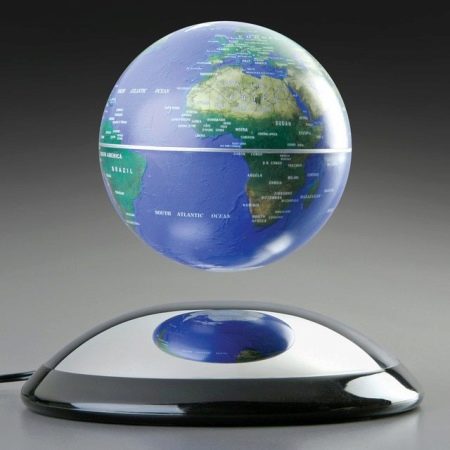
With the help of electromagnetic force, you can make any object levitate. On the Internet, they propose to conduct such an experiment: remove the magnet from the globe and insert it into any other object, place it in the center of the stand and hold it with your hands until the electromagnet starts working. If the object is not heavier than a sphere in weight, then it will take off. Many toys and accessories are based on the same principle: flying vases for plants, light bulbs, photo frames, music speakers and much more.

How to connect?
The stand or frame is placed on a horizontal surface such as a bedside table or table. It is important that the magnets are positioned exactly one under the other.... Then the device is connected with an adapter to the mains or supplied with batteries. Next, the ball is placed about 1.5 cm above the stand. It must be held with your hands until an electromagnetic attraction is felt. After that, you can push the sphere a little in order to understand whether the electromagnet is pushing it out or not. When the buoyancy force decreases (which means that the opposite charges docked), the ball can be released - now it will float on its own. To make the sphere rotate, you can easily push it with your hand.
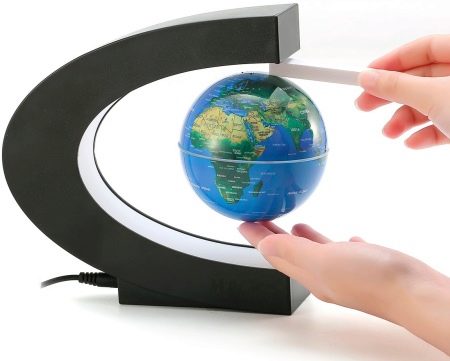
If the joining of two points does not happen in any way, it is worth moving the ball a short distance to the left or right, the main thing is not to go too far from the middle. If, as a result, the magnets still do not "see" each other, you can try to remove the globe from the stand, and after a while install it again. If this does not work, then there are malfunctions in the adapter, and it is better to hand over the goods or replace them.
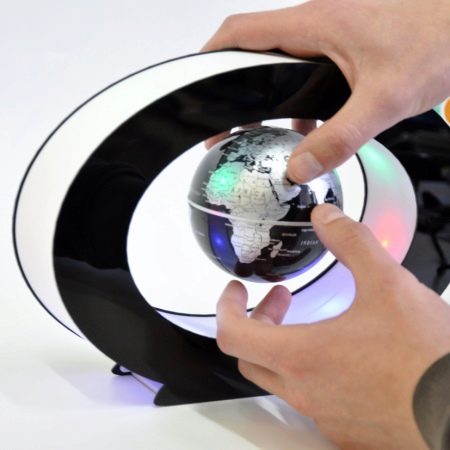
When turned off, the sphere is held by hand, while the cord is pulled out of the socket.
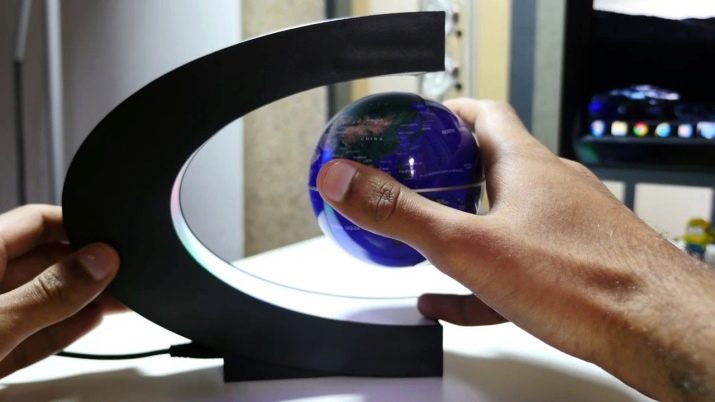
Safety engineering
First, as with any electromagnetic device, metal objects should not be placed near the levitating globe. The closest one must be at least 20 centimeters away from it, otherwise it will interfere with operation. Secondly, it is important to remember the shutdown rules: first of all, you need to take the ball and only then turn off the power - if you do not hold the sphere and let it fall to the floor, you can damage the magnet.
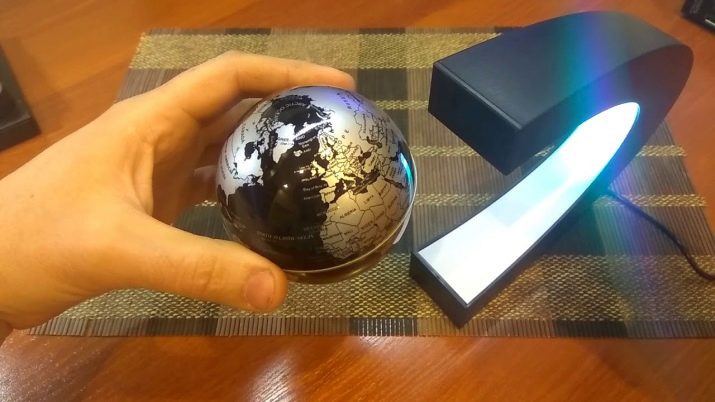
Obviously, such a scope is intended for indoor use only. Although some models are battery operated, they cannot be installed outdoors, even in warm weather. During operation, the device must stand on a level, non-vibrating surface to prevent malfunctions. And during storage, it is recommended to put the ball and the stand separately, because in the off state it is better for the magnets not to touch - demagnetization may occur.

Although the flying globe and its built-in magnets are not harmful to health, it is not recommended to use the structure for children under 12 years of age and people with pacemakers.
Review overview
In general, people who bought a flying globe for themselves or as a gift are satisfied with the purchase. They note the originality of the idea, the variety of designs and the ease of work. The globe serves as an interesting addition to the interior, catches the eye and raises a lot of questions about how this device works.
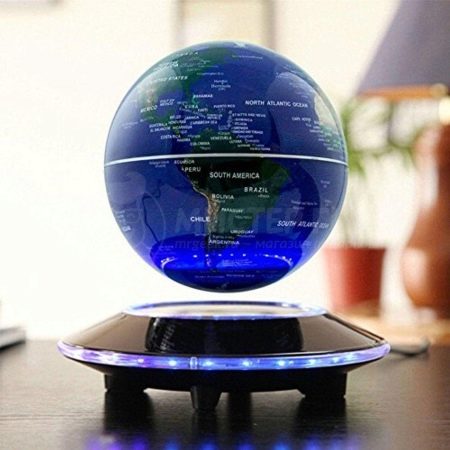
Most buyers learn about levitators from the Internet, and here they also find reviews and instructions for use. They are ordered directly from manufacturers or dealers - you can find good devices almost everywhere. Buyers note the quality of the packaging, thanks to which, even with a long delivery, the parts are not damaged: a layer of foam plastic and a protective film is put inside the box.
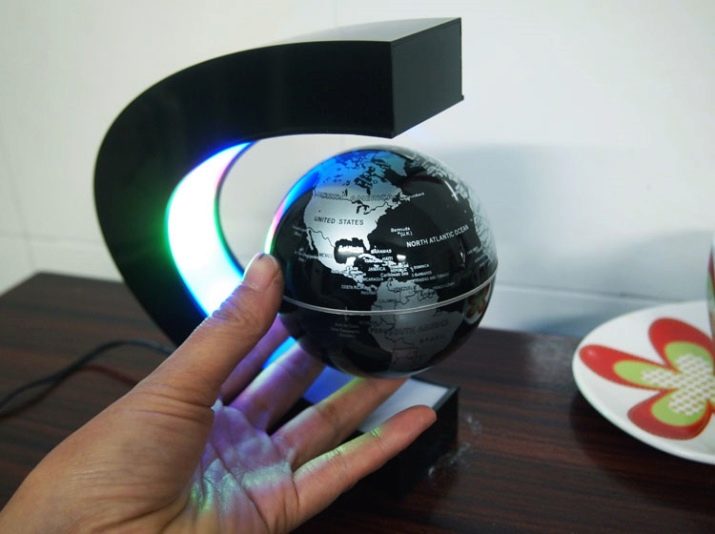
However, it is also important to remember the disadvantages of such a toy. Many of the owners complain about the difficulties of the first launch: in reality, the magnetic mechanism of the globe is very delicate, so it can take up to an hour to install the sphere and achieve magnetization. In addition, they notice that the instructions are not always sufficient to understand the principle of operation and assembly.
For models made in China, an adapter may be required due to a mismatch in the plug standard.

